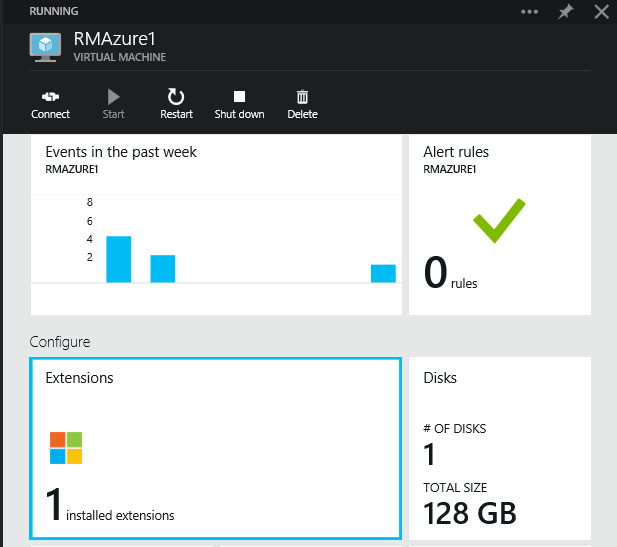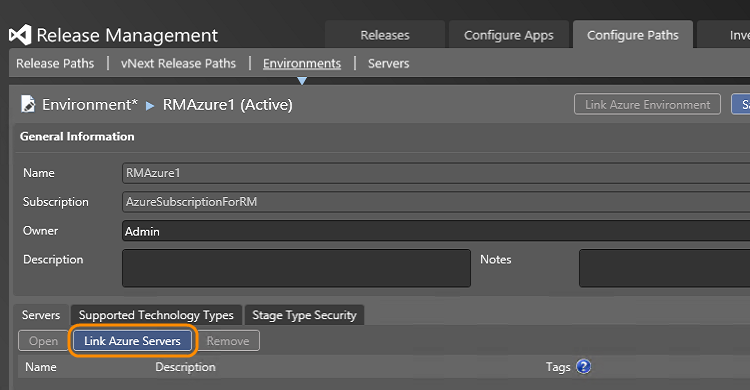How to install RM Azure extension and use the Azure VM in Release Management
RM extension enables PowerShell DSC and WMF configuration required for Release Management Server to perform actions on the VM. By installing RM Extension to Azure VM, the user can add this VM as a vNext Azure Server in Release Management once the corresponding Azure subscription added.
Steps to install Visual Studio Release Management Azure extension and to use the VM in Release Management.
First, you’ll need a Microsoft Azure account to create your VMs. If you don’t have one yet, sign up here.
1. After creating Azure VM from Azure management portal, browse to the VM and click on Extensions.
2. Click on Add Extension.
3. Select Visual Studio Release Management from the list of extensions and click on create.
Once you are done with installing RM extension to the VM,go to the Release Management server and add the subscription to proceed withusing the VM.
4. Add the details for your Azure subscription to Release Management.
Download the settings file from the Azure portal to get your subscription ID and Management Certificate key. Go here to get the name of an existing storage account or add a new storage account using the Azure portal.
5. Create a vNext Azure environment for each stage in your release path.
6. Link your Azure environment in Release Management to the Azure subscription that you entered.
Select the Azure subscription that you want to use withthis environment. (Sometimes it takes a few minutes to load your subscription.)The Azure cloud services for this subscription are displayed. Select a cloudservice to link the subscription to the environment.
If there are no cloud services for your Azuresubscription, you cannot link it to the environment. Go to the Azureportal and create a VM for this subscription. When you create a VM, a cloudservice with the same name is created by default. Refresh to select thiscloud service.
7. Link your Azure VMs in the cloud service as servers for the environment.
Select the servers that you want to link.
8. For each server, you can add configuration variables that can be used by your deployment actions. For example, you can add username and password here.
If you add configuration variables with the same name for actions in your release template, the values in any actions will override the values that you set here.
9. View the environments that you created in the environments tab. The type is shown as Azure.
Steps to deploy to Azure environments can be found here.













 Light
Light Dark
Dark
0 comments